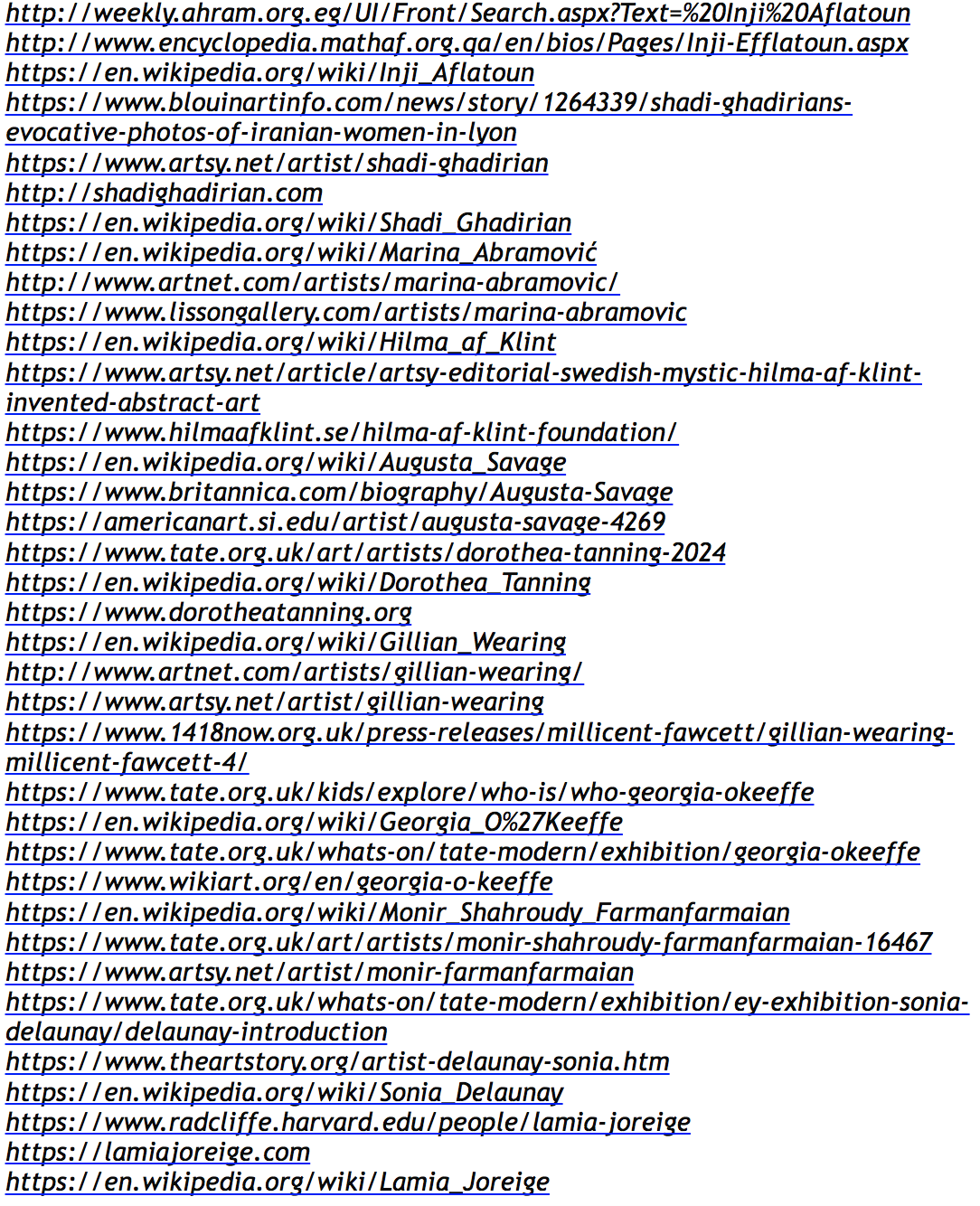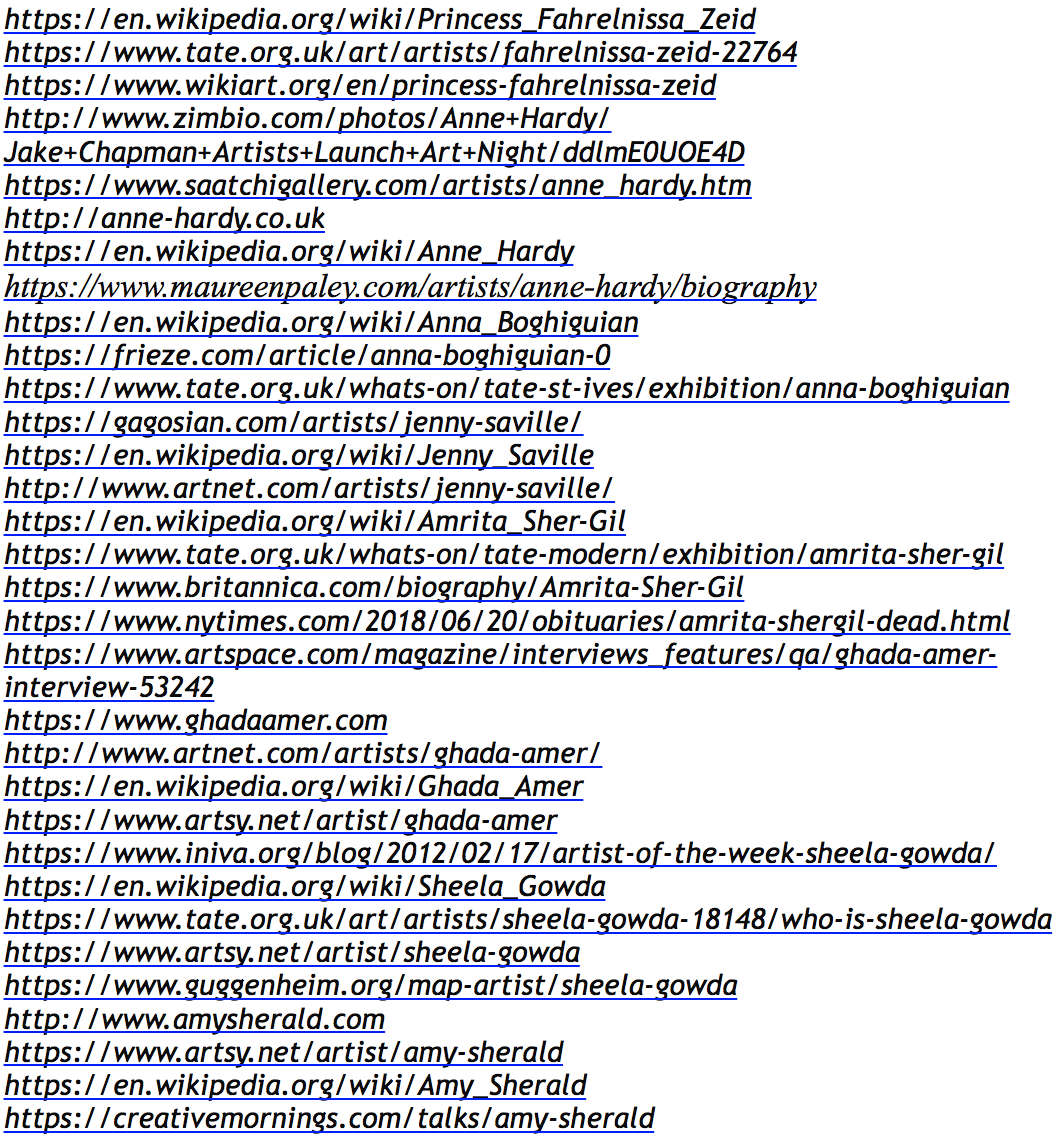Inji Aflatoun
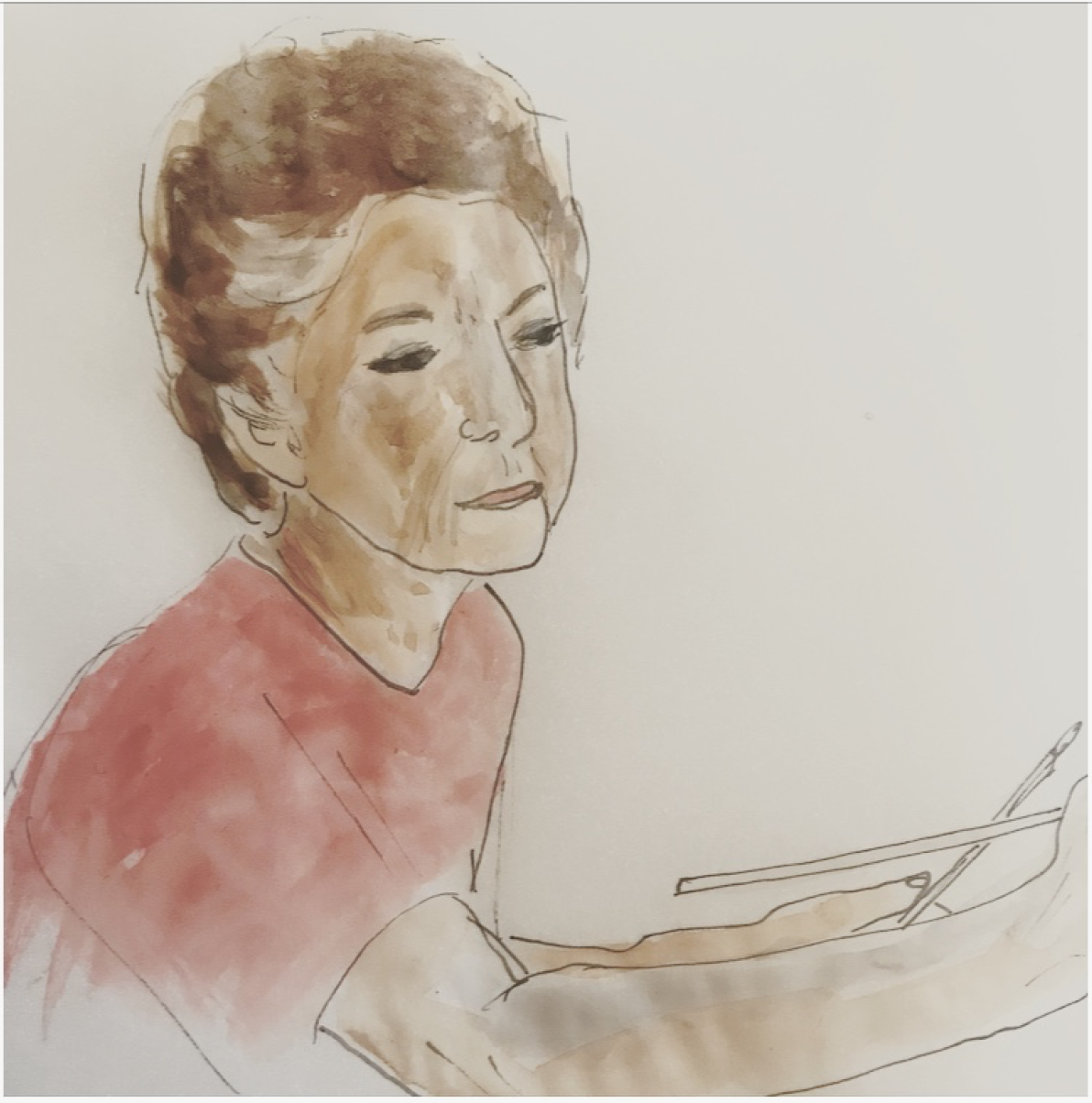
Inji Aflatoun was an Egyptian painter born in Cairo in 1924. She was a women's movement activists and a spokeswoman for the Marxist-Progressive Nationalist Feminists in the late 1940s and 1950s. It was her private art tutor Kamel al-Timisani who introduced her to the life and the struggles of everyday Egyptians. He was a leader in an Egyptian Surrealist collective called the Art and Freedom Group and also introduced her to surrealist and cubist aesthetics. In 1942, she joined Iskra a Communist youth party. After graduating from the Fuad I University in Cairo she was part of the Rabitat Fatayat at jami'a wa al ma' ahid - League of University and Institutes' Young Women. In 1945, she represented the League at the first Conference of Women's International Democratic Federation in Paris and wrote Thamanun milyun imraa ma'ana - Eighty Million Women with Us and in 1948 wrote Nahnu al-nisa al-misriyyat - We Egyptian Women. In 1950, she entered Harakat Ansar al Salam - Movement of the Friends of Peace. Studied for a year under Swiss artist Margo Veillon, exhibited in Cairo and Alexandria, showed in 1952 at the Venice Biennale and in 1956 at the São Paulo Art Biennial. Around 1959, she was secretly imprisoned during a communist roundup. Inji Aflatoun continued painting during her imprisonment. She later exhibited in Rome and Paris in 1967, Dresden, East Berlin, Warsaw and Moscow in 1970, Sofia in 1974, Prague in 1975 and New Delhi in 1979. Her works can be found in her permanent collection at Amir Taz Palace in Medieval Cairo, in the collection of Mathaf: Arab Museum of Modern Art in Doha and the Museum of Egyptian Modern Art in Cairo.
Shadi Ghadirian

Shadi Ghadirian is a contemporary artist photographer born and living in Tehran. She is a graduate of the Azad University in Tehran in art and photography. Her art depicts any struggles women may have living in Iran or the Arab world, the line between tradition and modernity as well as addressing or examining any Western assumptions. She pushes the envelop regarding people's assumption of women and their lives. Ghadirian gained international recognition with her series Qajar and Like Every Day in 1998 and 2001. In 2015, her work appeared at the Venice Biennale. The group exhibition “She Who Tells a Story” was on display in 2013 at the Museum of Fine Arts in Boston, the Cantor Arts Center at Stanford University and at the Carnegie Museum of Art in Pittsburgh in 2015 and in 2016 at the National Museum of Women in the Arts in Washington D.C. In1999 she had solo exhibitions at Golestan Gallery in Tehran, Iran and Leighton House Museum in London, UK. Her work is in the public collections of The British Museum and The Victoria and Albert Museum in London, UK, the Centre Georges-Pompidou in Paris, France, the LACMA in California, USA, The Smithsonian Museum in Washington DC, USA and many other institutions.
Marina Abramović
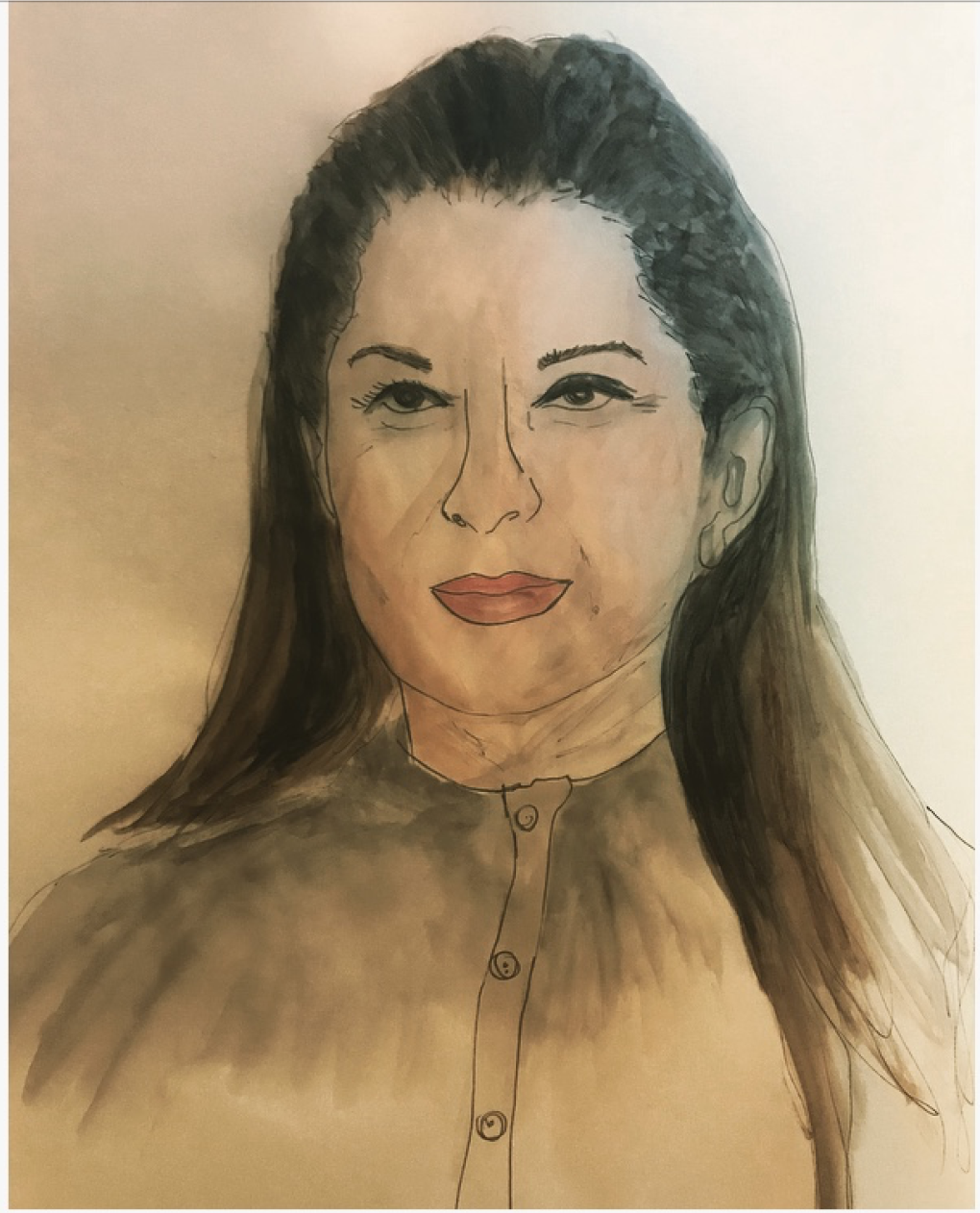
Marina Abramović is a performance artist and explores body art and its limits, the power of the mind, the relationship between performer and audience, identity and feminist art. She studied at the Academy of Fine Arts in Belgrade from 1965 to 1970 and then did her post-graduate studies at the Academy of Fine Arts in Zagreb, SR Croatia. Her mother was strict and all her performances in Yugoslavia had to be done before 10 pm as she had to be home by then. Her art performances were intense and involved cutting and burning. After marrying she moved to Amsterdam. There she met the West German performance artist Uwe Laysiepen, started working together and developed a relationship. In their work, they explored the ego, artistic identity and the limits of the body. They went their separate ways in 1988. Marina Abramović's work include The Artist Is Present a performance at the Museum of Modern Art from March 2010. Her works are held in the collections of the Los Angeles County Museum of Art, the Museum Ludwig in Cologne, the Rijksmuseum Twenthe in Enschede and the Reina Sofia National Museum in Madrid, among many others. Abramović has participated in many large-scale international exhibitions including the Venice Biennale (1976, 1997) and Documenta VI, VII and IX, Kassel, Germany (1977, 1982 and 1992). She has also established the MAI (Marina Abramović Institute) to support the future exploration and promotion of performance art. She has won many awards including a Golden Lion, XLVII Venice Biennale in 1997.
Hilma de Klimt
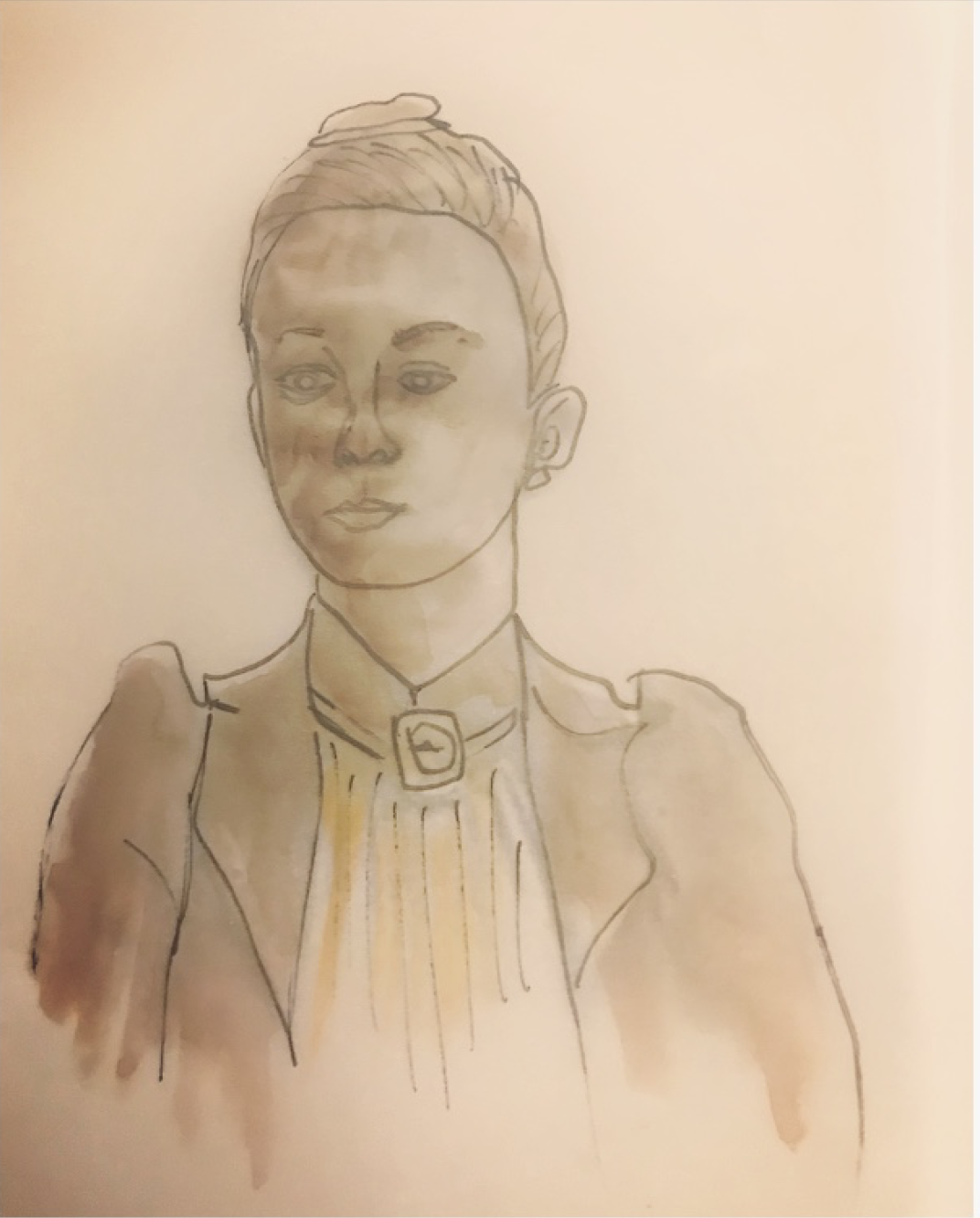
Hilma de Klint was a Swedish mystic and artist who's abstract paintings are said to be from the first in Abstract Art. She studied at the Academy of Fine Arts of Stockholm and her interest in mysticism and spirituality began when her younger sister passed away. At the Academy of Fine Arts she worked in a group called "The Five" (de Fem), a group of artists who shared her ideas. They developed surrealist drawings in 1896 which led her to paint geometric shapes. Her artworks, which are a number of paintings grouped as "The Paintings for the Temple" done between and around 1906 and 1915 are aesthetically very modern with painted geometric shapes. She rarely showed her work, as having been rejected, she worried that her paintings may be ahead of their time. Since her passing she has been internationally recognized with major retrospectives and exhibitions in art institutions and museums.
Augusta Savage

Augusta Savage was born Augusta Christine Fells in Florida in 1892. She was an African-American sculptor and worked for equal rights for African Americans in the arts. She studied at Cooper Union in New York City in 1921, selected before 142 other men on the waiting list. She was so talented that she was awarded additional funds for room and board when she lost the income from her job as an apartment caretaker. From 1921 through 1923, she studied under sculptor George Brewster and completed the four-year degree course in three years. In 1923 Savage was rejected for a Summer Art Program sponsored by the French government because she was African-American. She questioned the Committee and began the first of many public fights for equal rights in her life. Her bust of William Pickens Sr., a key figure in the NAACP, earned her praise. In 1925 she won a scholarship to the Royal Academy of Fine Arts in Rome but was not able to attend as she could not raise money for travel and living expenses. In 1929, she was able to travel to France and lived in Montparnasse, working in the studio of M. Félix Benneteau Desgrois. In 1931 Savage returned to the United States and in 1934 became the first African-American artist to be elected to the National Association of Women Painters and Sculptors. She then launched the Savage Studio of Arts and Crafts, located in Harlem. She opened her studio to anyone who wanted to paint, draw, or sculpt. Her many young students included the future nationally known artists Jacob Lawrence, Norman Lewis, and Gwendolyn Knight. Another student was the sociologist Kenneth B. Clark whose later research contributed to the 1954 Supreme Court decision in Brown v. Board of Education that ruled school segregation unconstitutional. This evolved into the Harlem Community Art Center. Savage received a commission from the 1939 New York World's Fair and her sculpture was the most popular and most photographed work at the fair. Her sculpted bust Gamin is on permanent display at the Smithsonian American Art Museum in Washington, D.C.
Dorothea Tanning
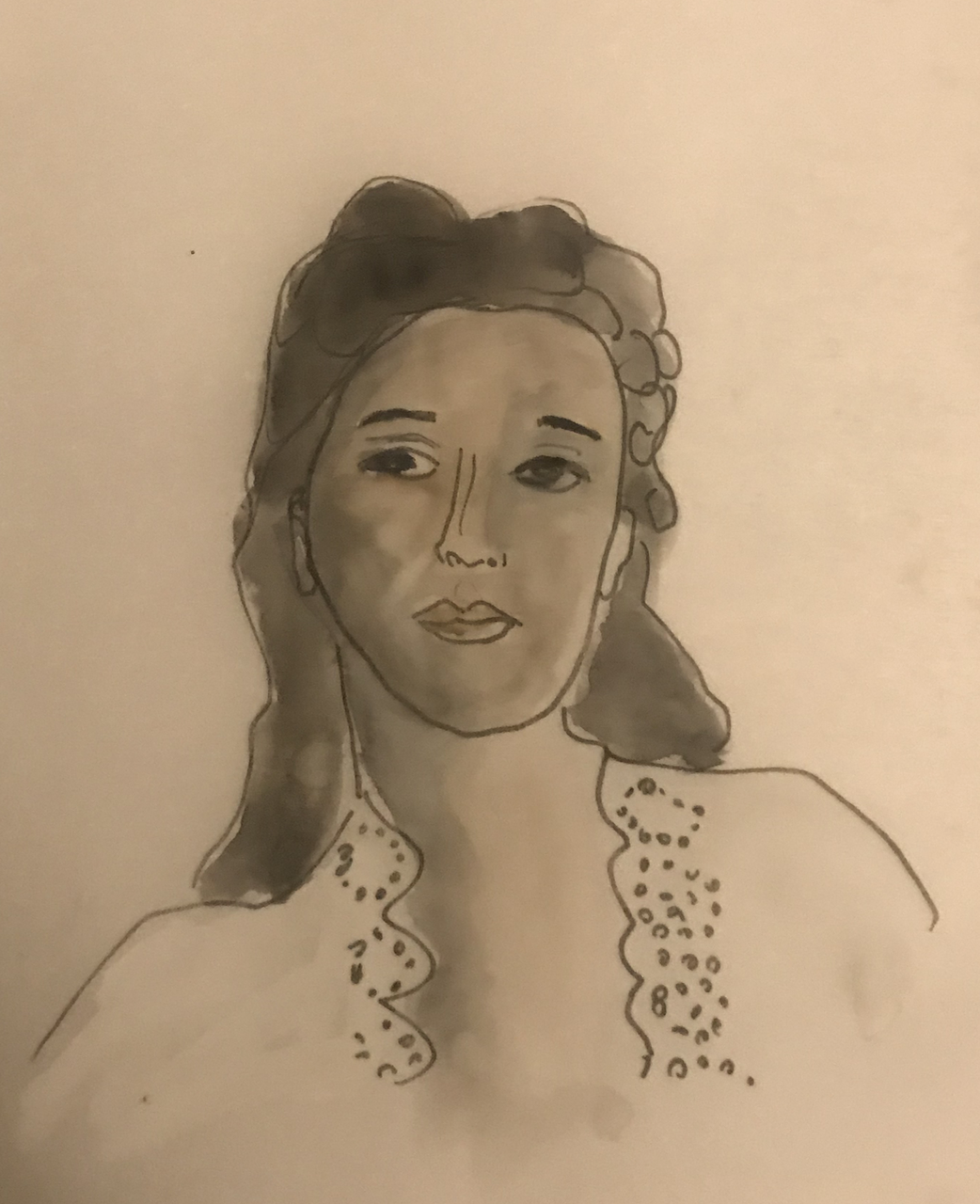
Dorothea Tanning was born in Galesburg Illinois. She moved to New York in 1935, discovering Surrealism at the Museum of Modern Art’s seminal 1936 exhibition: Fantastic Art, Dada and Surrealism. She was a self taught artist and worked to support herself as she painted. Impressed by her creativity and talent in illustrating fashion advertisements, the art director at Macy’s department store introduced her to the gallery owner Julien Levy. Levy gave Dorothea Tanning in 1944 and 1948 two one-person exhibitions and also introduced her to the circle of Surrealists including the German painter Max Ernst whom she developed a relationship with. They moved to Sedona in Arizona and later to France. In 1943, Tanning was included in Peggy Guggenheim's Exhibition by 31 Women at the Art of This Century Gallery in New York. Her close friendships with artists and writers of the Surrealist Movement and the surreal elements in her paintings have led many to regard Tanning as a Surrealist painter, yet she developed her own individual style. Tanning’s paintings became mainly abstract by the late 1960's keeping throughout the suggestion of the female form. From 1969 to 1973, Tanning produced fabric sculptures five of which comprise the installation Hôtel du Pavot, Chambre 202 in 1970–73, now part of the permanent collection of the Musée National d'Art Moderne at the Centre Georges Pompidou, Paris. She had a major retrospective in 1974 at the Centre National d’Art Contemporain in Paris (which became the Centre Georges Pompidou in 1977) and in 1993 at the Malmö Konsthall in Sweden and the at the Camden Art Center in London. In 2010 Tanning turned 100. She wrote stories and poems and her first short story was published in VVV (magazine) in 1943. In 2001, she wrote an expanded version of her memoir called Between Lives: An Artist and Her World.
Gillian Wearing CBE RA

Gillian Wearing studied at the Chelsea School of Art in 1987 and then in 1990 at Goldsmiths, University of London. She formed part of the Young British Artists (YBA's). Gillian Wearing uses the medium of photography and film for her art, documenting everyday life and looking at the themes of identity and the blurred lines in life. Her artwork "Signs that say what you want them to say and not Signs that say what someone else wants you to say" from 1992-1993 is a series of portraits of strangers she had approached in the street and asked them to write what they were thinking about on a white sheet of paper. In 1997, she won the Turner Prize for "60 Minutes Silence (1996)" in which Wearing used a fixed camera to film a group portrait of British Police officers. The power relation between the viewer and the viewed is shifted. Through the filming, the officers become more relaxed and more in par with the viewer. In 2018, she produced a statue of the suffragist Millicent Fawcett which was unveiled in London's Parliament Square and which is the first statue of a woman in Parliament Square. In 2007 Gillian Wearing was elected as a lifetime member of the Royal Academy of Arts in London and was appointed Officer of the Order of the British Empire (OBE) in the 2011 Birthday Honours for services to art.
Georgia O’Keeffe

Georgia O'keeffe was an American artist and in 1905 trained at the School of the Art Institute of Chicago and then at the Art Students League of New York, but due to lack of funds, she was unable to continue further in her education and had to work as a commercial illustrator. In 1917, Alfred Stieglitz, an art dealer and photographer, held for her an exhibition and asked her to move to New York. Their working relationship developed into marriage in 1924. Her paintings of close-up flowers led some to believe that they were a sexual metaphor and a feminist notion. Around 1929 she spent time in Southwest, which inspired her paintings of New Mexico landscapes and images of animal skulls. Upon Alfred Stieglitz's death, she lived permanently in New Mexico and then in Santa Fe until her death. She was elected to the American Academy of Arts and Letters and as a Fellow of the American Academy of Arts and Sciences. In 1971 she received the M. Carey Thomas Award at Bryn Mawr College and in 1973 she received an honorary degree from Harvard University. President Gerald Ford presented O'Keeffe with the Presidential Medal of Freedom in 1977 and she was awarded the National Medal of Arts by President Ronald Reagan in 1985. She was inducted into the National Women's Hall of Fame in 1993. The Georgia O'Keeffe Museum was established in Santa Fe after her death at the age of 98.
Monir Farmanfarmaian

Monir Shahroudy Farmanfarmaian is a contemporary Iranian artist who lives in Tehran. In 1944 she studied at the University of Tehran at the Faculty of Fine Art. Due to the outbreak of WWII, instead of going to study in Paris, she went to study in New York at Cornell University and at Parsons The New School for Design. After a career as a fashion illustrator and being plunged into New York life and the art scene, she moved back to Iran in 1957. There she developed the fusion of Persian and Western style in her artwork by crafting mirror mosaics and abstract monotypes which resulted in geometric shapes and patterns. Her work was featured at the Iran Pavilion in the 1958 Venice Biennale. When the Iranian Revolution started, she was exiled for over 20 years with her second husband. Her work then after shifted from her mirror abstractions to drawings and textiles. When she returned to Iran in 1992, she returned to her mirror mosaics artworks. Her work has been exhibited at the Museum of Modern Art (MoMA), Solomon R. Guggenheim Museum, Leighton House Museum, and Haus der Kunst among many other museums. She participated in 2009 in the 6th Asia Pacific Triennial of Contemporary Art, in 2010 at the 29th Bienal de São Paulo and in 1958, 1966 and 2009 at the Venice Biennale, where in 1958 she received the Venice Biennale, Iranian Pavilion solo gold medal. In 2017, the Monir Museum in Tehran was opened in her honor.
Sonia Delaunay

Sonia Delaunay born Sarah Ilinitchna Stern was a Ukrainian-born and French artist. She came to be known as Sonia Terk when her mother's brother and his wife adopted her. She attended the Academy of Fine Arts in Karlsruhe Germany at the age o 18. Following that she moved to Paris and attended the Académie de La Palette in Montparnasse. She married German art gallery owner Wilhelm Uhde in 1908 and met her future and second husband Robert Delaunay the following year through the gallery. Together Robert and Sonia worked with colour and design calling their experiment Simultanéisme, when one element such as a pattern, colour or brushstroke was placed next to another affects both elements. In 1913, their friend the poet Guillaume Apollinaire, described the married couple's version of Cubism as Orphism, this brought together a focus on abstraction and colour. After some time away from Paris, in 1917, the Delaunays in Madrid met Sergei Diaghilev. For Diaghilev's production of Cleopatra and Aida in Barcelona, Sonia designed the costumes and Robert did the stage design. Sonia founded Casa Sonia, selling her designs for interior decoration and fashion. She also had a branch in Bilbao. Around 1921, they returned to Paris and Sonia immersed herself in working in fashion. After the depression she returned to painting. In 1975 Sonia was named an Officer of the French Legion of Honor.
Lamia Joreige
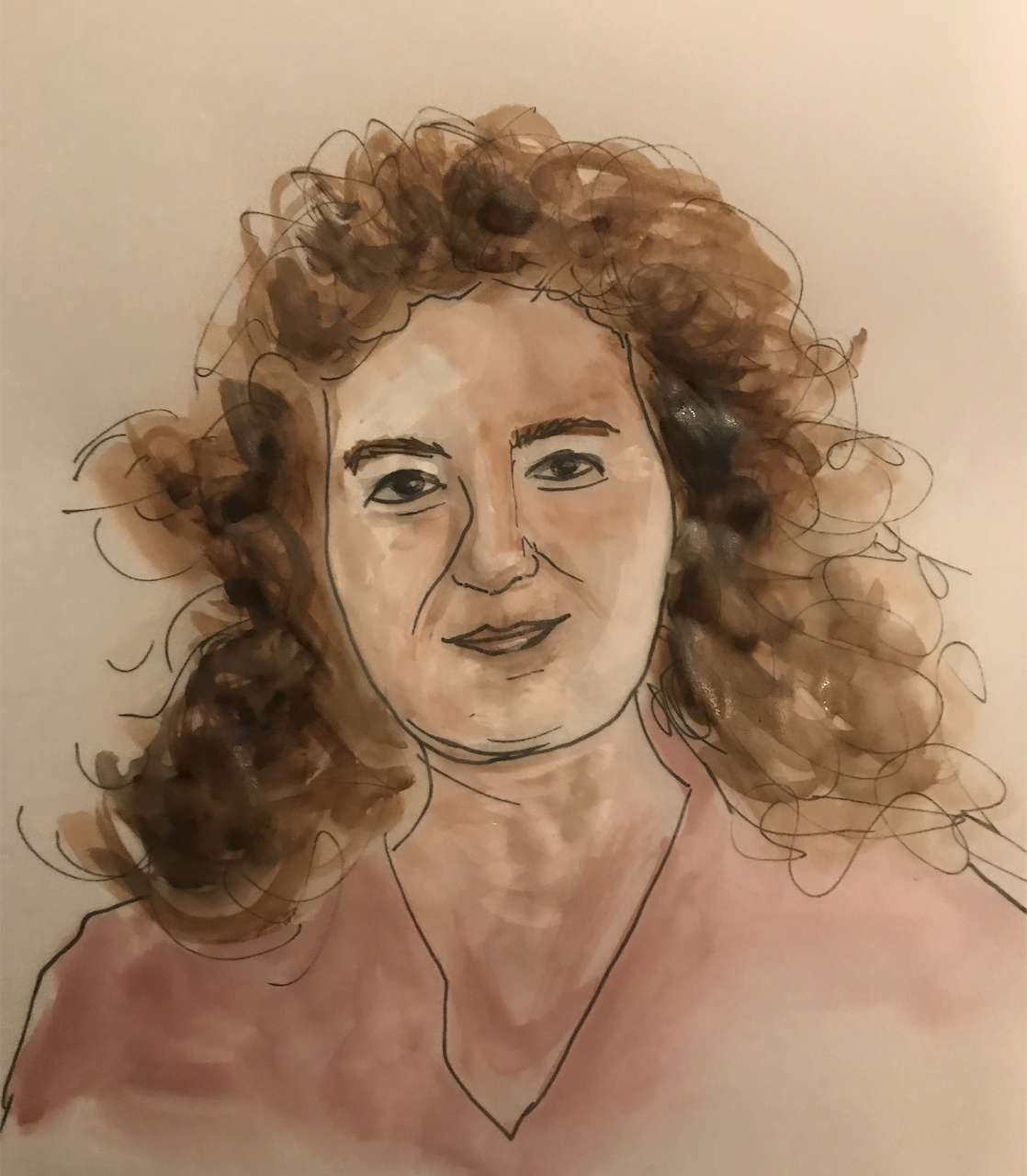
Lamia Joreige is a Lebanese artist and filmmaker. She studied at Rhode Island School of Design, Providence, Rhode Island. In 2011, her artwork Objects of War, Testimonials on the Lebanese War was acquired by the Tate Modern. San Francisco Museum of Modern Art produced her video Beirut, Autopsy of a City as part of Story Board. Her artworks were on display in exhibitions at MAXXI and Fondazione Sandretto Re Rebaudengo in Italy, Centre Pompidou in France, at Harvard University’s Radcliffe Institute, for the Liverpool Biennial, at Tate Modern, Serpentine Gallery and Sharjah Biennial (UAE) among many others. She was awarded best film at the Medfilm Festival in Rome, was a fellow at the Radcliffe Institute for Advanced Study at Harvard University for the year 2016–2017 and was shortlisted for Artes Mundi 7, the United Kingdom’s leading biennial art prize. She is the co-founder of the Beirut Art Center in Lebanon.
Princess Fahrelnissa Zeid
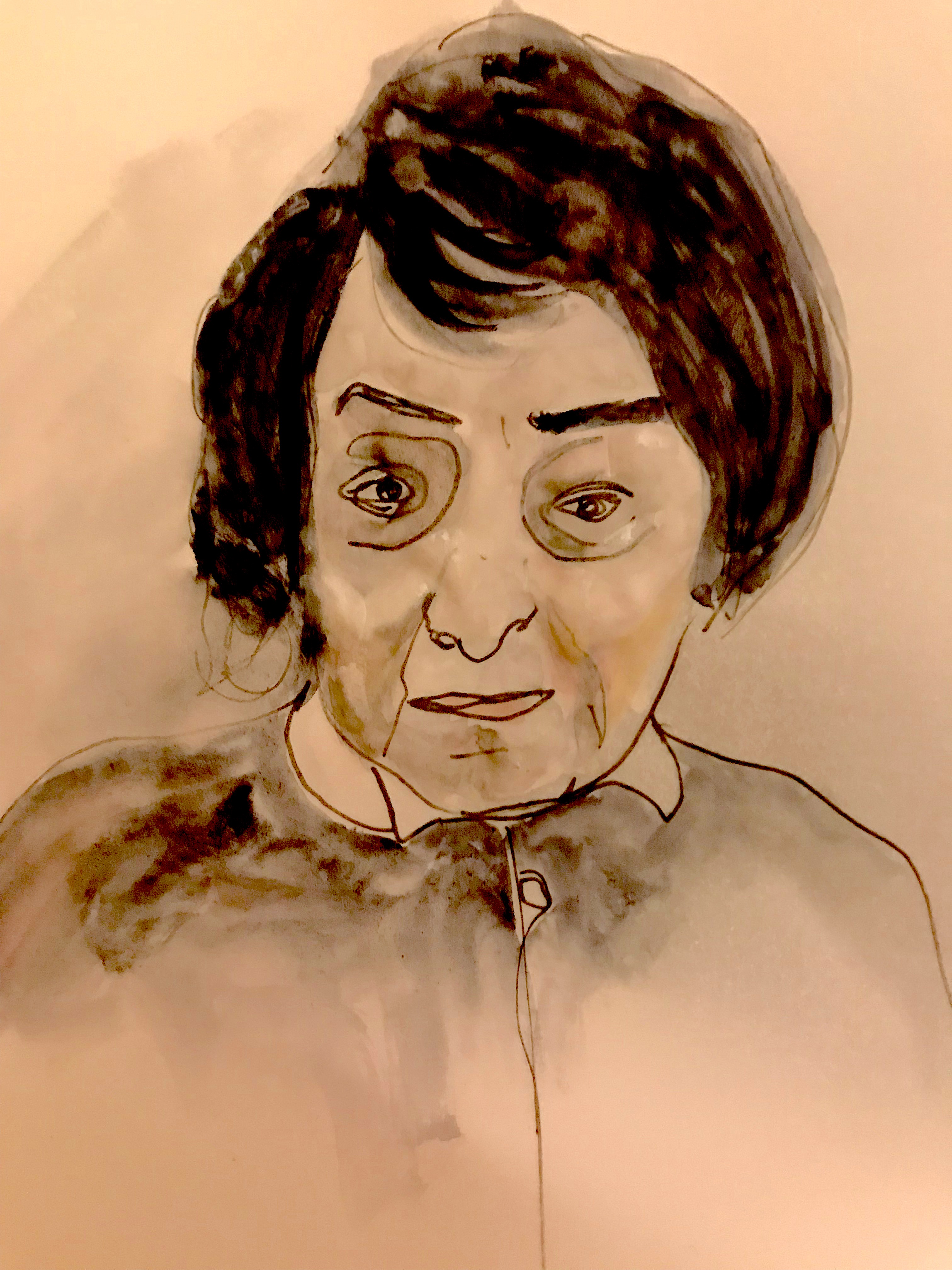
Fahrelnissa Zeid was a Turkish artist born Fahrünissa Şakir into an elite family. After marrying in 1928, she traveled to Paris to enroll in the Académie Ranson. In 1929, upon returning to Istanbul she studied at the Istanbul Academy of Fine Arts. She divorced and remarried in 1934 to Prince Zeid bin Hussein of Iraq. Around the 1940s, in the new Turkish Republic under Mustafa Kemal Atatürk, she was part of the D Group of Istanbul, an avant-garde group of artists. She thereafter around 1945 felt confident enough to exhibit on her own. Having moved to London as her husband Prince Zeid Al-Hussein became the first Ambassador of the Kingdom of Iraq to the Court of St James's, she exhibited in 1948 at Saint George’s Gallery in London and it was attended by Queen Elizabeth, The Queen Mother. Her artworks were vibrant in colour and formed a kaleidoscopic of geometric abstract patterns. In 1954 she exhibited at the Institute of Contemporary Arts in London. Then on the 14th July 1958 there was a military coup in Iraq in which the entire royal family were assassinated. Fahrelnissa Zeid and her husband narrowly escaped death, but Fahrelnissa Zeid's career as an artist halted and their circumstances meant she had to get used to a simpler life. At the age of 57 she cooked her first meal which catapulted her to create her sculptures paléokrystalos, in which chicken bones were painted on, and cast in resin. In 1975, she joined her son in Amman, teaching and mentoring young women until her death in 1991, and founding in 1976 The Royal National Jordanian Institute Fahrelnissa Zeid of Fine Arts. In 1990 at the Museum Ludwig in Cologne, her first retrospective was held. In 2017 Tate Modern held a retrospective of her work and acquired her artwork "Untitled C".
Anne Hardy
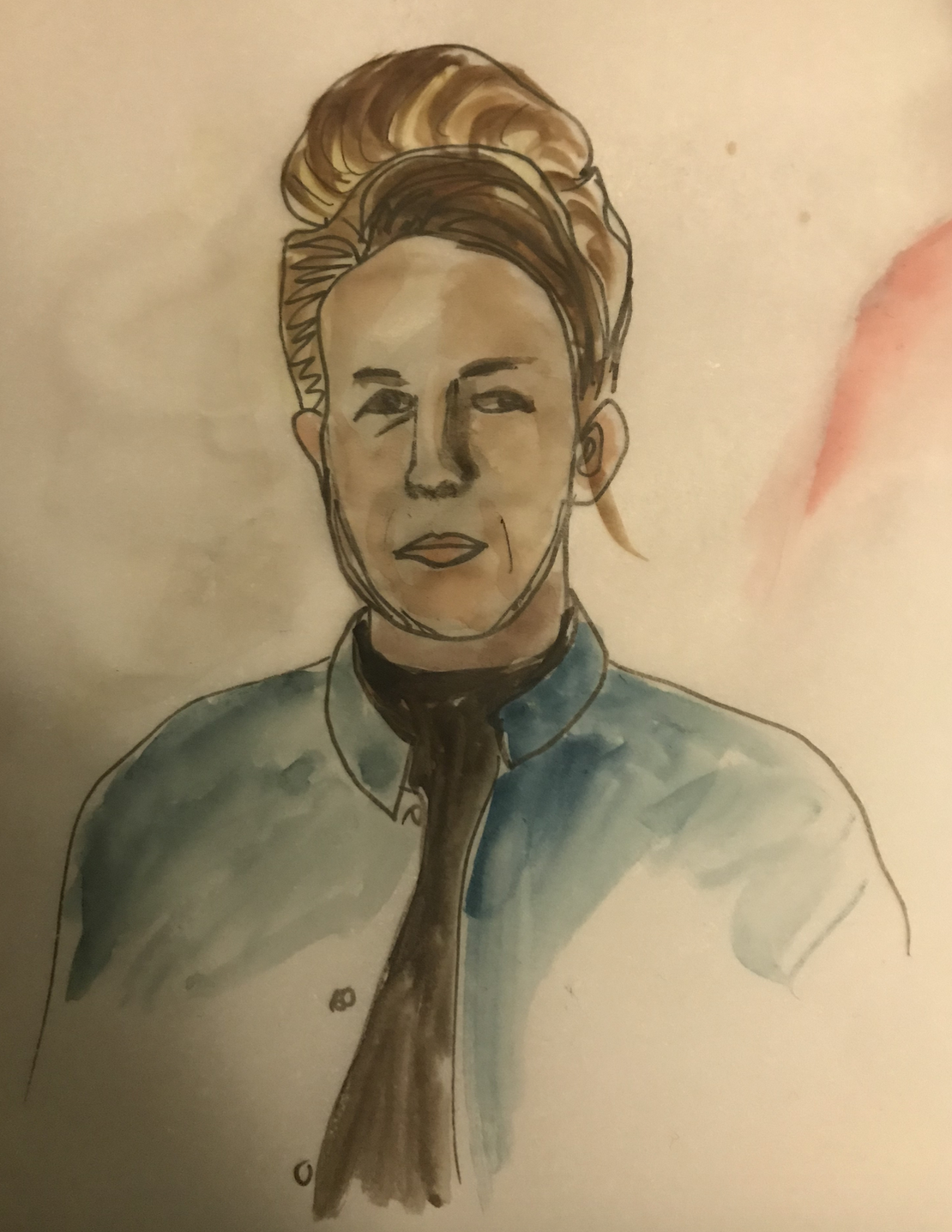
Anne Hardy is a British artist who studied at Cheltenham School of Art and the Royal College of Art in London. Her work includes sculptural installation, photography and audio. She had a solo exhibition in 2018 at the Museum Boijmans Van Beuningen in Rotterdam, at Maureen Paley in London and at Leeds Art Gallery in Leeds. In 2017 she was part of Art Night London and in 2015 exhibited at Modern Art Oxford in Oxford and The Common Guild in Glasgow. In 2007, her 2005 work Untitled IV (balloons) was shown at the Victoria and Albert Museum (V&A) and it was also acquired by them for their collection. That same year, she also participated in the 52nd International Venice Biennale art festival among other group exhibitions at Marta Herford, The Hayward Gallery London, New Art Gallery Walsall and Barbican Art Gallery. She was an artist in residence at Camden Arts Centre in London in 2011 and took up a residency at Modern Art oxford-Live in the Studio in 2014.
Anna Boghiguian

Anna Boghiguian is an Egyptian-Canadian artist of Armenian origin and was born in Cairo. She first studied political science at the American University in Cairo, Egypt and art in Egypt in the 1960s. She then studied at the Arts and Music at Concordia University in Montreal, Canada around the early 1970s. Her work links art with memory, researching aspects of labour and colonialism, exploring the salt and cotton trade. Anna Boghiguian has exhibited at New Museum, New York in 2014, Van Abbemuseum, Eindhoven in 2015 and im many other institutions, with solo exhibitions at Castello di Rivoli in Turin and Index, The Swedish Contemporary Art Foundation in Stockholm. She has participated in The Armenian Pavilion at the Venice Biennial and the Istanbul Biennial, both in 2015, at the São Paolo Biennial in 2014 and Documenta 13, in Kassel in 2012. She has been nominated for the 8th edition of the Artes Mundi award and her works are part of the collections of MoMA in New York, Guggenheim in Abu Dhabi; The Art Institute of Chicago and Castello di Rivoli Museo d’Arte Contemporanea, Torino.
Jenny Saville RA

Jenny Saville is a British contemporary artist who studied at the Glasgow School of Art. Upon graduating, her artworks were entirely purchased by Charles Saatchi. Saville formed part of the Young British Artist (YBA) and also exhibited at Saatchi's 1997 Sensation exhibition at the Royal Academy. She is a figurative painter, who's work depicts large nudes, distorted flesh and imposing brushstrokes. She has exhibited at Gagosian Gallery in New York, at the Museo d'Arte Contemporanea Roma, in Rome and at Modern Art Oxford in Britain, amongst many other institutions. Her works are held in the collections of the Broad Art Foundation in Los Angeles, the Brooklyn Museum, and the Metropolitan Museum of Art in New York, among others. In 2018, Jenny Saville's artwork "Propped" became the most expensive artwork to be sold at auction by a living female artist.
Amrita Sher-Gil

Amrita Sher-Gil was a Hungarian-Indian artist. She was born in 1913 in Budapest to an aristocratic and bourgeois Indian and Hungarian family. She learnt to paint at a very young age. Around 1923, her mother enrolled her at Santa Annunziata, an art school in Florence. At 16, she went to Paris with her mother, first to study at the Académie de la Grande Chaumière then around 1930 at the École des Beaux-Arts. Her oil painting "Young Girls" of 1932 won a gold medal and propelled her in 1933 to be elected as an Associate of the Grand Salon in Paris. She was the only Asian and the youngest member ever. Around the end of 1934 and beginning of 1935, she returned to India and her art style changed, choosing to paint locals and villagers, sympathizing for the rights of Indians who sought independence from Britain. Around 1937, she painted her South Indian trilogy: Bride's Toilet, Brahmacharis, and South Indian Villagers Going to Market. At the age of 28, in 1941 she became very ill and fell into a coma. This was days before her first solo show in Lahore. Her art and depiction of women and life in India forms part of her legacy. Most of her paintings are hanged in the National Gallery of Modern Art in New Delhi. In 1978, India Post released a postage stamp with the image of her painting "Hill Women" and Unesco declared 2013, the 100th anniversary of her birth to be the international year of Amrita Sher-Gil.
Ghada Amer
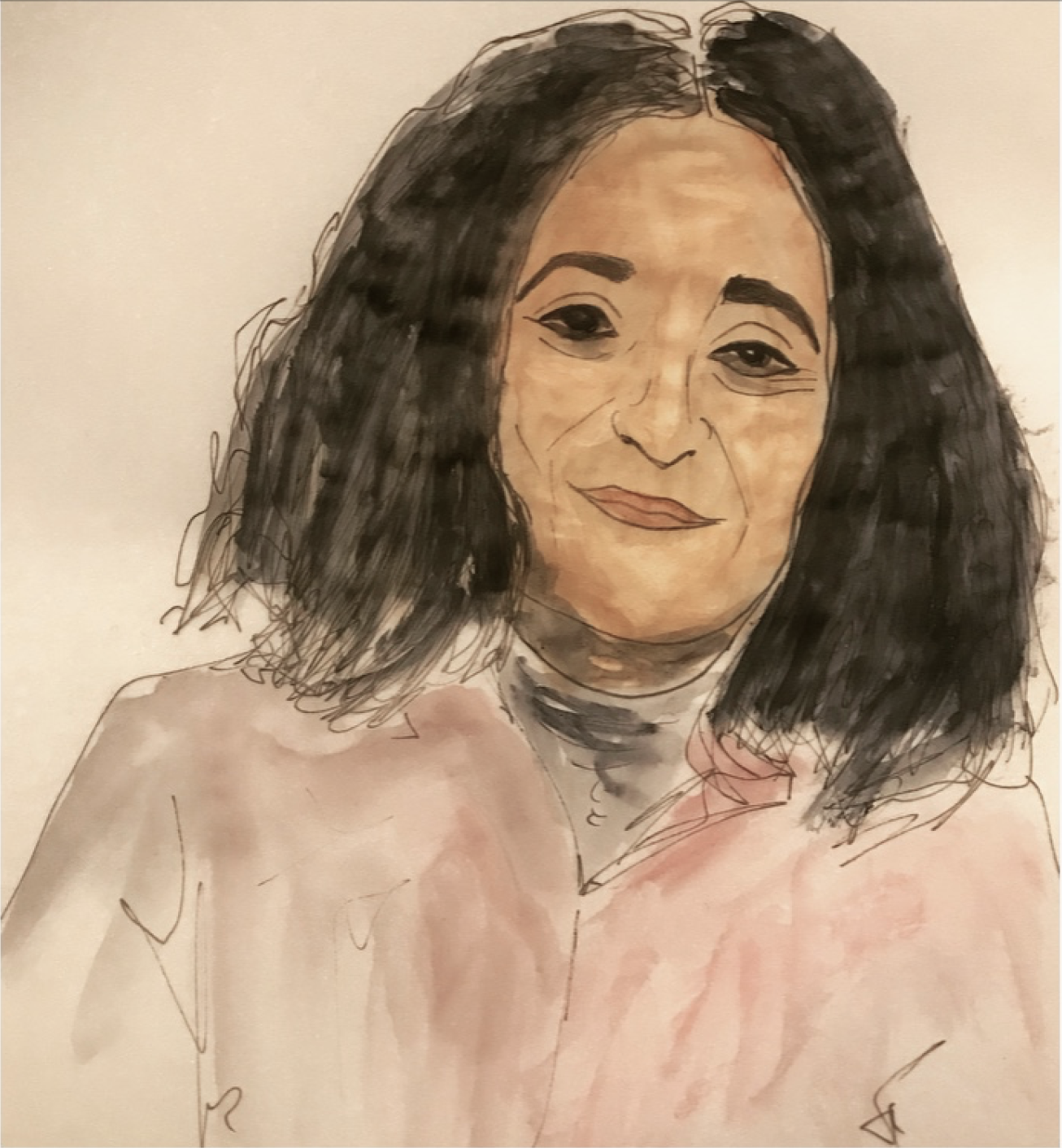
Ghada Amer was born in Cairo, Egypt and moved to France at the age of 11. She studied painting at the Villa Arson EPIAR in Nice and at the Institut des Hautes Etudes en Art Plastique in Paris. In Nice, at the Villa Arson EPIAR, some of the painting classes were exclusively for the male students and Amer was not allowed to join. This prompted her to find creative ways to break into the art world. She looked to embroidery, a medium associated traditionally with women, to use it in an unconventional way. Her artworks of the female body exploring sexuality and cultural norms are often a mix of paint and embroidered work on canvas. She has exhibited at Cheim & Read, Deitch Projects and P.S.1 Contemporary Art Center in New York, Gagosian Gallery in London and Beverly Hills, amongst other institutions. She has been part of the 1997 Johannesburg Biennale and the 1999 Venice Biennale, where she was awarded the UNESCO prize. In 2008 she had a retrospective of her work at the Brooklyn Museum of Art. Ghada Amer's work is part of the collections of the Art Institute of Chicago, Birmingham Museum of Art in Alabama, the Centre Pompidou, Paris, Museum Kunst Palast, Düsseldorf, amongst many other institutions.
Sheela Gowda
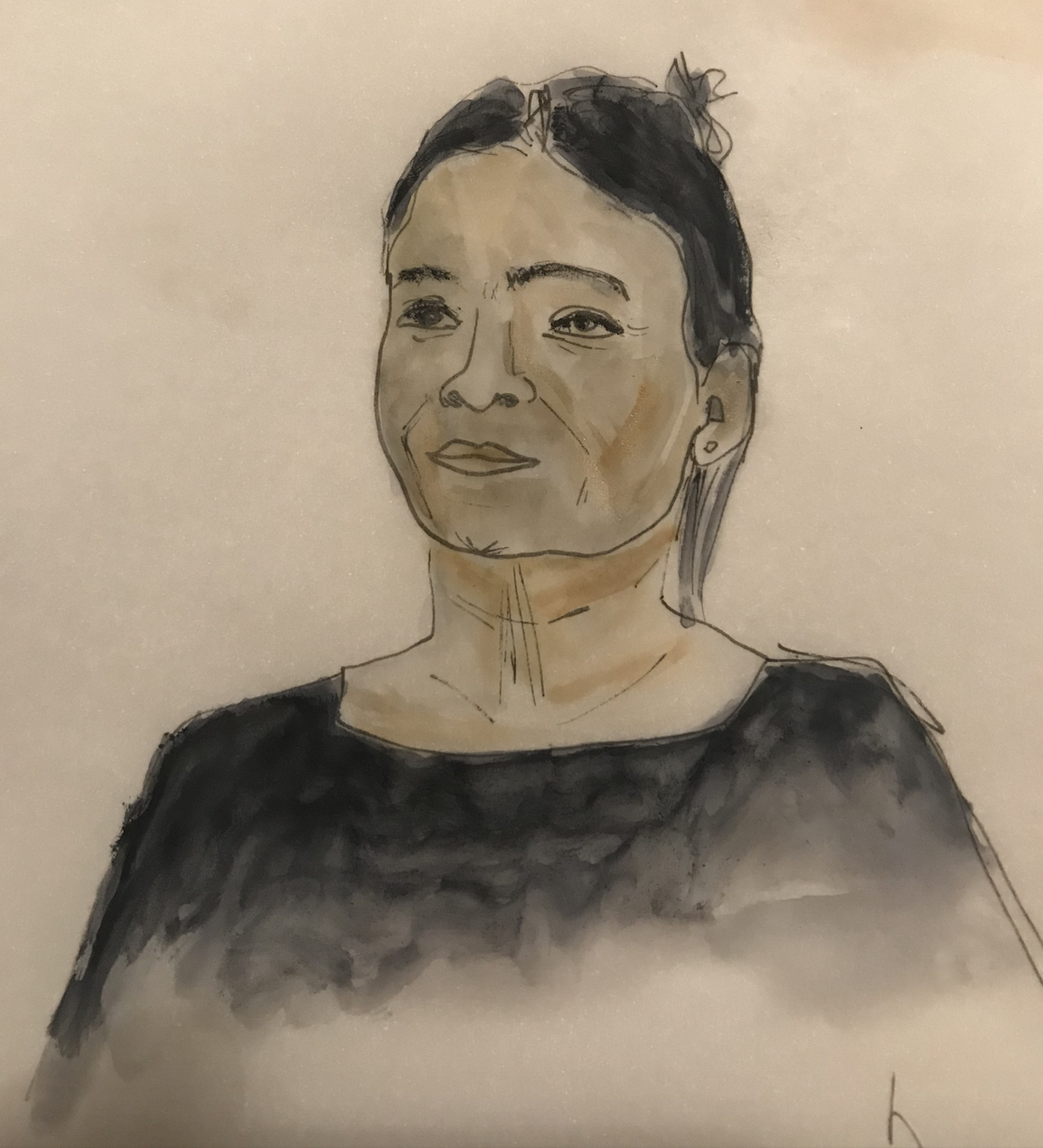
Sheela Gowda is an Indian contemporary artist. She studied painting in 1979 at Ken School of Art, Bangalore, India then in 1982 at Visva-Bharati University, Santiniketan and in 1986 in London at the Royal College of Art. Her work draws on the social and political landscape in India such as the effects of labor. In the 1990's her art evolved into art installations and sculptural work, using materials such as kumkum, string and cow dung. She has exhibited at Venkatappa Art Gallery, Bangalore in 1987 and 1993, at Gallery 7, Mumbai in 1989, Bose Pacia Gallery in New York in 2006 and many other galleries. In 2011 her showed at Iniva London and in 2014, she was a finalist for the Hugo Boss Award. She was part of Documenta 12 in 2007, Venice Biennale and Provisions, Sharjah Biennial in 2009 and Garden of Learning, Busan Biennial in 2012. Sheela Gowda is the recipient of the 2019 Maria Lassnig Prize.
Amy Sherald

Amy Sherald is an American artist who studied painting in 1997 at the Clark Atlanta University and then in 2004 at the Maryland Institute College of Art. Sherald paints with a realism genre, and looks enlarge the scope of the History of Art through her portraits of African-Americans. She was the first woman in 2016 to win the Outwin Boochever Portrait Competition grand prize. She has exhibited at Monique Meloche Gallery, Chicago in 2016, at Reginald F. Lewis Museum in Baltimore in 2013 and at University of North Carolina, Sonja Haynes Stone Center, Chapel Hill in 2011. Her artworks form part of the public collections at the Embassy of the United States in Dakar, Senegal, National Museum of Women in the Arts, the Smithsonian National Museum of African American History and Culture and the Smithsonian National Portrait Gallery in Washington, D.C, amongst many other institutions. In 2018 the portrait of Michelle Obama by Amy Sherald was unveiled at the Smithsonian's National Portrait Gallery, making Sherald the first African-American woman to paint an official First Lady portrait.
Bibliography:
